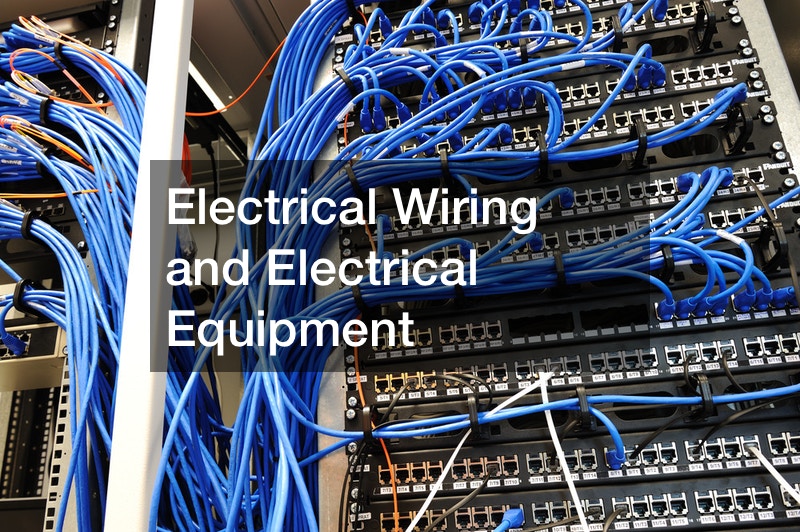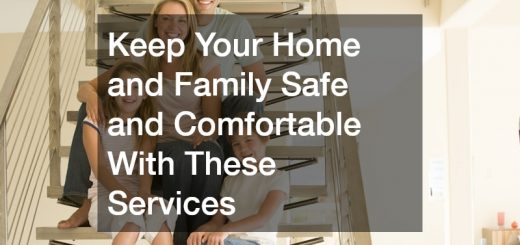Top 10 Hazards in the Home

There are many lists out there right now about home hazards. The purpose of this list is to help you figure out whether or not you need to worry about a particular hazard. If you do, make sure you do something about it. Here are the top 10 hazards in the home
Electrical Wiring and Electrical Equipment

The number one among the top 10 hazards in the home is electrical wiring and electrical equipment. This is because it is dangerous to have them exposed. Like anything exposed, it can attract dust and other things that can cause problems. It’s good to cover electrical outlets in plastic and all exposed wires of this nature.
Electrical wiring and electrical equipment are a constant danger to young children. These dangers include live wires that can be stepped on, touching an exposed wire that touches another person, or touching any electrical components such as light switches or outlets. Electrical cords could also work their way into trap doorways, under stairs, and along floor cracks. If you have bathrooms where young children may enter, it is commendable to install a trip switch so that the toilet can be easily locked from the inside when it runs dry. A trip switch is not necessary if your toilet has a lever-type handle on top, but rather only if there is no handle at all. You can enlighten yourself on interventional pain management jobs to offer first aid services to your family members in case of accidents at home.
Heat Sources

These are among the top 10 hazards in the home that produce heat, such as a heating unit or oven. Although they should be put away when they aren’t being used, they should still be turned off if not in use to prevent fire or the risk of an accident.
Many people don’t know how to use a fuse box and don’t know how to test all the fuse boxes around their house, so they are potentially in danger of fire due to an electrical fire. Electrical fires can be caused by faulty wiring, incorrect installation, loose or short circuit wires, exposed wires, or extension cords. The best way to prevent these domestic fires is by installing fuses in each room and every outlet around your house. You can also search for the best fire sprinkler system design to safeguard your home from frequent fires.
There are many batteries and other things inside them, some of which aren’t properly installed or don’t have enough power and get you shocked when you touch it. Power trips can also be caused by old circuit switches out of calibration when switching on and off the power. They can even be caused by garage door openers being too weak for their doors, which could cause them to jam if not replaced with something made for the strength needed. People’s other issue with electrical hazards is electrocution due to low or high voltage issues. There is always a threat of this happening when working with electronics manufacturers.
Liquids or Water Spills
Liquids are dangerous top 10 hazards in the home. This is because they can be stagnant when not being used in a fridge or freezer compartment, especially when not monitored by someone responsible for them at all times during the day. Pouring water from a bottle onto the floor can cause water damage and the like. An example of spilling water would be coming upon an old house where someone had pooled several buckets of water on the floor on an old rug before leaving it alone for years without cleaning up afterward, resulting in mold growing on the said rug. Water spills also pose a risk to pets with their nails getting into wet substances without warning or notice, especially dogs with long nail beds.
As it turns out, spills can be hazardous. While you may have a protective plan ready to take care of this situation, hard water can damage many parts of your home. It’s not just the house that will be damaged as well as your possessions. The floors, walls, and ceilings will also be underwater.
Walls and their contents will become contaminated if water spills in your house. This is because a great deal of dirt or dust will get on the floor after a spill and end up on the walls or ceiling above it. Not only that but there’s always an increased risk for mold growth after any water damage occurs in your home. You don’t want that to happen, so it is important to do something about it if it does occur in your home septic tanks or business space.
Once the water reaches its high point, cleaning efforts are often negative for the business owner or homeowner involved with the repair project. There’s not enough time to clean all the things before starting to repair them because you won’t have enough time to finish all of them while they are under repair at one time; therefore, you’ll need to stay late at work and get up early to complete them all before repairing them all by yourself. Besides that, you’ll need professional help with cleaning and drying equipment if everything has been wet for days due to lack of preparation before this disaster happened in your house or office building at one time inside of it.
Many home improvement projects can be catastrophic when you’re not prepared for them. Keep in mind that a lot of work is not needed a single time. If you’ve ever completely redone your home, you know how much work is involved in getting everything back to normal. However, if you want an organized and clean space that has never been the case before, make sure that you first prepare yourself.
Unsecured Objects
Unsecured objects are one of the top 10 hazards in the home. They involve anything that isn’t securely attached to something else that could pose a potential danger to children and pets walking over them or playing with them. At the same time, they aren’t supervised, whether they be fragile toys, coins stuck in books, or loose papers. It would help if you always secured anything in this category until it is needed again.
You probably have things on your balcony that are just out of reach and could fall. Make sure they are always secured. Don’t leave anything loose because it could end up falling with the slightest breeze. If you have another object that has a higher chance of falling, make sure you secure both of them together and keep an eye on them at all times, not just when you are going to be away for a while.
Unstable Fences

These fences aren’t usually made to keep animals out, although they can do that. This is usually the outcome if someone uses it as a playground or something similar. Look around, check other houses or properties for loose or unstable fences and fix them immediately as they are part of the top 10 hazards in the home.
Tornadoes can also happen any time at any place, and you don’t want to wait for a tornado to happen to take steps about something serious like this. If possible, seal off your windows from the window frame to prevent it from happening again. If you live near mountains, there are chances of tornadoes happening on the mountain, and people need to be aware, so they don’t panic when one comes close and destroy their house instead of pushing it away from them as much as possible outside walls and roofs.
Tree fall is also hazardous at homes. Trees sometimes fall because they are old, weak, or dead. Having this kind of hazard on your property is something you can’t control. If a tree falls on your structure, it is the same as having a tornado or thunderstorm happen. It causes damage or can even kill someone in your household. If possible, plan which side of your house the tree should fall not to damage or kill someone in your household. It is advisable to have personalized medicine to help treat some injuries at home before getting to the hospital.
Volatile Substances

Volatile substances are among the top 10 hazards in the home. This includes gasoline and other flammable liquids in the garage and candles left unattended around the house since they tend to burn out easily electrical cords. Extension cords left around the house without supervision might also cause fires when someone decides to unplug something or pull out an extension cord from a socket. This type of incident usually causes an extremely difficult mess to clean up.
Mold Growth
Mold is one of the top 10 hazards in the home that comes in all shapes, sizes, and colors. Its growth can be found on many different surfaces but is most commonly found on rugs, furniture, carpets, clothing, and countertops. Mold can be caused by many factors, including poor ventilation and humidity levels. It can also result from soap overuse intended for cleaning or not allowing items to air dry after being cleaned. It keeps food scraps in trays in front of air conditioning vents and allows dust bunnies to accumulate around outlets that continue to attract dust and other particles that can cause mold.
Surplus Amounts of Trash
Most people have too much trash that isn’t properly disposed of because they keep it in their garage. Some even have a second garage filled with unwanted old furniture or other junk they don’t want anymore, but they still need the space. The best thing you can do with excess garbage is taken it to your local trash collection center so they may dispose of it correctly.
Surplus trash is among the top 10 hazards in the home that will create the perfect environment for rodents and insects to thrive. Eliminate those foods that could attract these pests, like junk food wrappers, cans, bottles, and other types of trash. Put all junk in plastic bags or tied up with string. Place them in a trash disposal bag for removal to the nearest recycling depot each week.
Garage storage is where things get banged up as items are moved around or inside garages that lack air conditioning during the summer months. Be sure to have ample outlets near the garage door to use your power tools during an outage easily. Avoid items with hazardous battery materials and cables as they will pose a fire hazard if they are not removed from your garage.
Keep clutter out of sight by storing heavy items high in a closet so that falling objects do not injure small children or house pets. Securely hang clothing on hangers away from doors or windows for small children and pets that could become entangled in clothing or lose threads from curtains and drapes, which can snag small fingers or feet. Regular pest control services are key if your home has too much trash.
Obstructions
Obstructions are among the top 10 hazards in the home. Obstructions are anything placed across doorways, windows, hallways, etcetera that might cause injury or discomfort if passed through them. It may be clothing hangers on doors, furniture blocking a doorway, branches or other plants placed in hallways, bedding on windowsills or doorways. If a family member is obstructed and falls, they may develop severe mental issues that need mental health counseling to treat.
Unstable Objects

Unstable items in the house like books, furniture, or glassware constitute the top 10 hazards in the home. This usually refers to anything potentially dangerous if placed in the wrong position. There are many ways to handle this. The simplest way is to move them far away from anything that could break easily. Any time you need to use something that could break easily, make sure it’s within arm’s reach and stored in a safe place.
Broken items can also contribute to accidents at home. Many people are unaware that if you leave a package on its own for too long in your home, especially if it is a food item, it could potentially become dangerous to the health of children and pets that come in contact with it. Many people also don’t understand that even packaged items rated as freeze-dried can still be dangerous if they aren’t kept cold. It is commendable to work with the best home construction companies to remove all broken items from your house.
In conclusion, it is important to understand all forms of home hazards and prevent them from harming home occupants. It is also important to look into basic safety measures, such as installing alarms or locks. It is also vital to be careful when doing gymnastics at home.







